This roc 5e guide will take you on an in-depth journey regarding this special Dungeons & Dragons bird. This massive bird once rivaled dragons, and now they see everything they encounter as prey.
The roc is as iconic of a bird as Marahute from The Down Under. In the D&D world, they’ve been around since the first edition. Not many D&D creatures have been, so seeing a monster bridge the gap between generations is nice.
I don’t recall ever encountering a roc in one of my DnD campaigns, but after reading their story, I feel as if I need to. I love wereravens, phoenixes, and diatryma. The roc is the next bird on my list.
Roc 5e Rundown
- AC -15 (natural armor)
- HP – 248 (16d20 + 80)
- Speed – 20 ft., fly 120 ft.
- Size – Gargantuan Monstrosity
- Alignment – Unaligned
- Challenge – 11 (7,200 XP)
This list of stats indicates that the roc isn’t all that difficult to hit, but it does have decent HP. Because it has a challenge rating of 11, you may not want to introduce it to your party until around level 10.
History and Biology of the Roc
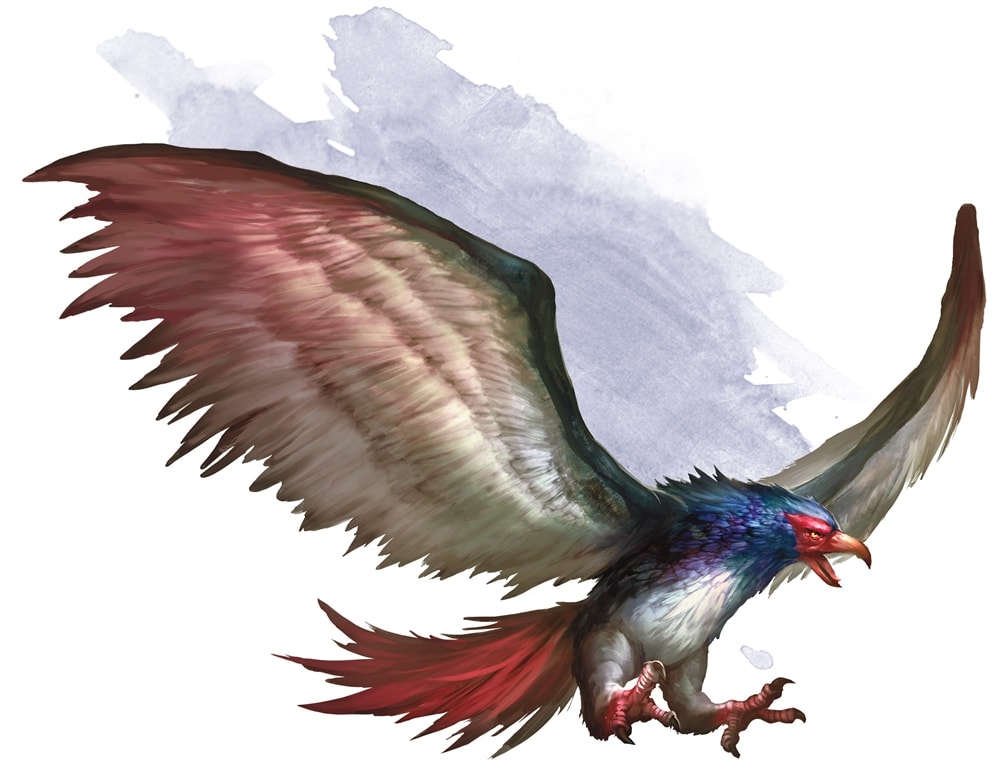
The roc has a long but constant history in the world of D&D. They have been around since ancient times, never becoming endangered due to their 8,000lbs and 100-foot wingspan.
Dragons Vs Birds
It is said that Annam, god of the giants, created rocs so that he would have an army to rival the dragons. He wanted airborne soldiers that might one day take over the world – and eventually the realms.
After the war, the rocs were free to roam the world as they pleased. Their rivalry with dragons more or less ended in favor of prey – as dragons were equal adversaries who weren’t that easy to take on.
Spoiler Alert: They Eat Everything
If you want to know whether a creature is considered prey to the roc, the answer is probably yes. However, they tend to avoid small creatures that won’t sustain them for long and focus on large, slow creatures.
Their favorite snacks include elephants and other large mammals that could be considered a full meal. They don’t mind traveling far for lunch, but they aren’t exactly vicious creatures that taunt their prey. They want to eat.
Rocs in Love and Family
Rocs tend to live alone, but they do breed. Their breeding seasons are few and far between. But whenever they do lay eggs, they keep them in their nests and watch over them instinctively.
This instinct to watch over their young may come from the fact that they once protected Simurghs from predators until the guardians could fend for themselves.
Roc Habitat
Rocs aren’t greedy, nor do they care about treasures. But because they are so large, they often use old ships and caravans to create their nests. This can cause adventures to brave the rocs and invade the nests.
Roc 5e Ability Scores
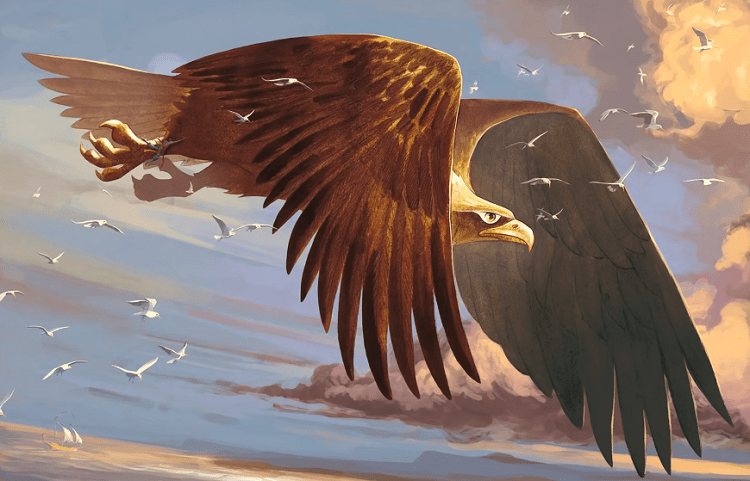
- STR – 28 (+9)
- DEX – 10 (+0)
- CON – 20 (+5)
- INT – 3 (-4)
- WIS- 10 (+0)
- CHA – 9 (-1)
Rocks are strong and tanky, but they are extremely unintelligent. The only creatures that are dumber are a few animals (ex. hyena, crocodile, bat) and the creatures we hardly consider beings (black pudding, gelatinous cube, violet fungus.)
So, intelligence isn’t the roc’s strong suit, but at least it’s not an evil creature. Unaligned dumb creatures are easy to understand. They act on instincts alone, which can make a fight easier or harder, depending on your tactics.
Roc 5e Actions – Prepare for Trouble and Make it Double
The roc only has two real actions because the third action combines the two. This is the attack that the DM will ensure it uses most of the time, but there are situations where it will only have time for one.
- Multiattack – This attack uses the beak and the talons, combining the two below attacks.
- Beak – melee attack that is +13 to hit, has a reach of 10ft, and one target. It does 27 (4d8 + 9) piercing damage if it hits.
- Talons – melee attack does+13 to hit, has a reach of 5 ft., and one target. It does 23 (4d6 +9) slashing damage if it hits. Plus, the target is grappled with an escape of DC 19. However, until the target escapes, the roc can’t use its talons.
Roc 5e Passives, and More
- Saving Throws – DEX +4, CON +9, WIS +4, CHA +3
- Skills – Perception 4
- Senses – Passive Perception 14
- Passive Ability – Keen Sight gives advantage on Perception checks that rely on sight
That Speed Though
It’s not easy to get a good grasp on flying speed in DnD. So, comparing the roc’s flying speed to the flying speed of other creatures is a good way to keep things straight.
The roc is twice as fast when flying as a random bird – eagle, raven, hawk. This seems strange considering it’s so big and should cover more air. But it’s the same speed as a phoenix or Planetar. The only creature that flies faster (Monster Manual) is the Solar.
Good Luck Using Moonbeam on this Guy
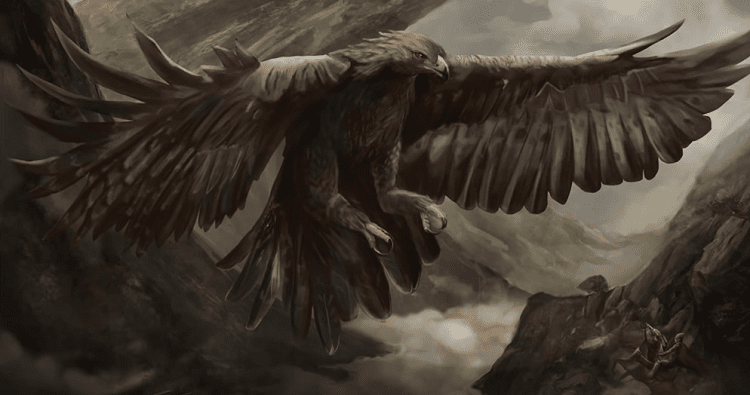
If you want to damage the roc, don’t use something with a Constitution saving throw unless it’s a really high one. He has a plus-nine on Constitution saving throws which is kind of insane.
That said, he’s quite susceptible to Intelligence attacks. Things like Phantasmal Force, Feeblemind, and Symbol the roc will be helpless against, but they’re not always easy to use properly against mindless monsters.
Medium Perception – with Four Senses
The roc doesn’t have amazing hearing or a sense of smell. But it does have terrific eyesight. It can see so well that it gains advantage on all Perception checks that rely on eyesight.
How to Defeat a Roc
So you were in the middle of a roc fight – or just started one – and the session ended. Now you’re here looking for tips on how to take that roc on next week. Luckily, a roc solid strategy is simple.
The biggest threat a roc poses is that it can fly and that it is strong. But it doesn’t have the intelligence of other flying creatures nor the motives that something like a dragon does.
Don’t Use CON Attacks
The roc has a really good Constitution saving throw. It also has Dexterity, Charisma, and Wisdom saving throws, but they’re not very high. Intelligence-based saving throw attacks are great, but they’re not typically heavy damage.
Regular attacks that require a hit rather than a saving throw are good bets. Get that damage out as fast as possible, though, because this guy hits hard. He has a max damage of 75 per turn.
Ranged for the Win
Melee players may struggle against the roc. Because he is ten times faster in the air than on the ground, he’ll probably spend most of his time flying, swooping down for his attacks.
You can always ready an action so that you attack when he comes down. But if this doesn’t happen, then you’re really just going to miss out on some of your turns. So consider this carefully.
Fly if You Can
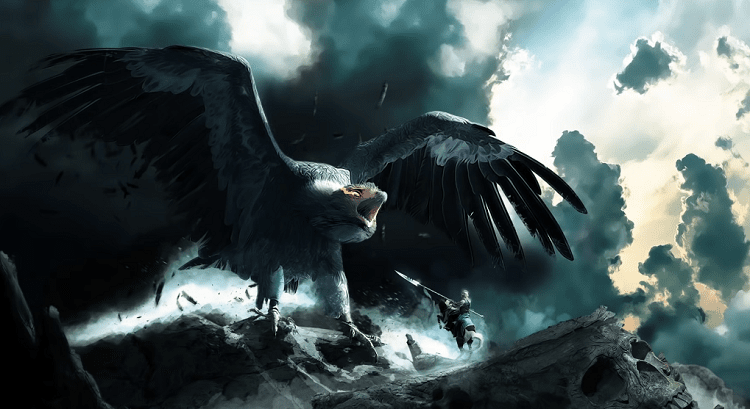
If you have the Fly spell or are a flying race – like the Aasimar – then you can fly during combat. However, you’ll probably be quite a bit slower than the roc, so it won’t be easy to keep up.
Also, the roc may knock you out of the air. If you get knocked prone while flying, you may not be able to catch yourself, and fall damage is no joke. But if you’re a strong flyer, it can be a good distraction.
Creating Roc Personality and Lore
Even if the roc is boring most of the time, that doesn’t mean that the DM can’t spice things up. The best part about being a DM is that the rules don’t apply to you. You can get as creative as you want, ensuring your players have the time of their lives.
I love creating stories for NPCs and monsters alike. I find that it’s a bit lazy not to give them deep stories
Hybrid Gone Wrong
The first idea that comes to mind regarding the roc’s story is that he was once part of a hybrid experiment that merged him with another creature. This gives you so much room for creative freedom.
The other creature could be an Aarakocra, which will give him a bit of intelligence while still keeping his bird frame. Another gargantuan – like a kraken or greatwyrm- makes sense.
Annam’s First Roc
How long do rocs live? This is never stated in any of the books. So, what if the roc that your party encounters is one of the first – if not the first- roc that Annam created? An apex roc with extra high ability scores.
I love this concept because you can even give it a language – probably Giant – so that it can possibly communicate with the party. I imagine it would have a voice similar to Entei.
Guardian of the Guardian
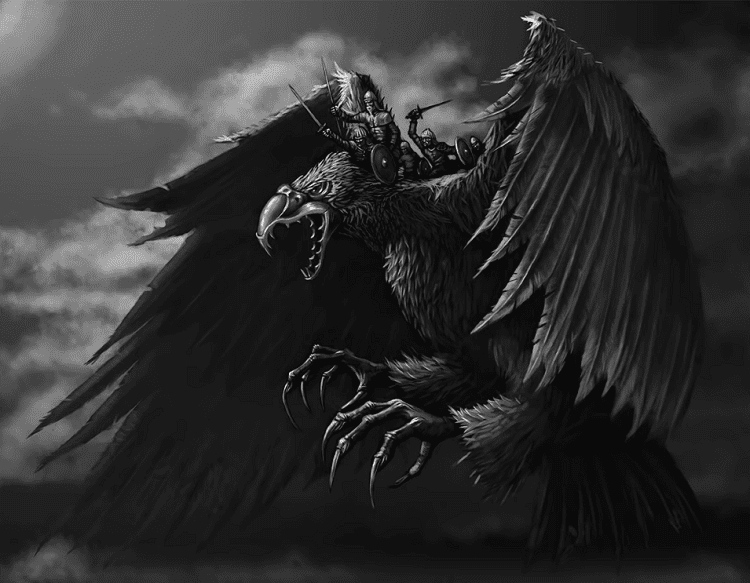
Historically, rocs protected Simurghs while they were hatchlings. This could follow through to present time in your campaign. If your party encounters one of these, the Simurgh may even band with your party.
Because Simurgh are Lawful Good and often used as mounts for adventures, its instincts would probably tell it to protect you. This could end with it defeating the guardian that has kept it alive all this time.
The Egg Thief
This could go either way. The roc could be an egg collector that used its instincts to hoard and protect eggs that would soon hatch. If this were the case, it would become a foster mother of sorts.
Whenever your party encounters the roc and defeats it, they may choose to take one of the eggs or stay until some of them hatch. If you love loot boxes or have a great Ranger, this could be the campaign’s highlight.
Stashing the Pantry
It’s a well-known fact in the D&D world that rocs eat a lot of meat daily. So, it makes sense that they would keep their pantry stashed instead of going out daily for food.
The pantry could be a nearby cave or pit full of elephants, bears, and giant creatures. Not only is this an exciting find, but it can be an extra danger – will these creatures be friends or foes?
FAQs
Question: How Big is a Roc in 5e?
Answer: A roc is a Gargantuan creature that weighs around 8000lbs and has a wing span of around 100 feet. It stands around 30 feet tall, which is the height of a two-story building.
Question: Can You Tame a Roc in 5e?
Answer: It wouldn’t be likely that you would tame a roc in D&D. Historically, giants could tame rocs, but now rocs roam free and wild, enjoying their life of mindless eating and nesting.
Question: Are Rocs Real Birds?
Answer: Rocs were real birds in mythology and a popular part of Middle Eastern lore. The origins are similar, but with the fight being between the bird Garuda and the serpent Nāga.
Question: Can You Polymorph Into a Roc?
Answer: The roc is a monstrosity, not a beast. Because the player can only turn into beasts, you cannot turn into a roc. Your DM can override this ruling, but in 5e you cannot turn into a roc otherwise.
Question: How Do You Defeat a Rock in 5e?
Answer: There isn’t a secret strategy to defeat a roc. You keep attacking it until it is dead. Ranged attacks are better because the roc will fly most of the time. But other than that, try to get a good hit on him.
Is Roc 5e a Good Monster?
The Roc is usually first encountered when it appears as a boss fight. Usually, it’s whenever you unknowingly travel into its home or you intentionally enter its nest in search of treasure.
The roc is a good monster for mid-game players. Low-level players will wipe out quickly, and late-game players will need a pair of rocs at least to keep them entertained.
If you do introduce a roc, I suggest diving into the lore behind them to keep the players interested. Otherwise, it really is just a big, dumb bird. If you add the story, it’s a big, dumb bird with cool ancestors.
- Augury 5e Guide – The Vaguest and Coolest Cleric Spell - September 5, 2022
- Roc 5e Guide – The Big, Dumb Bird You Don’t Want To See - September 5, 2022
- Best Drow Name Ideas – From Alvin to Sânziana - August 30, 2022

